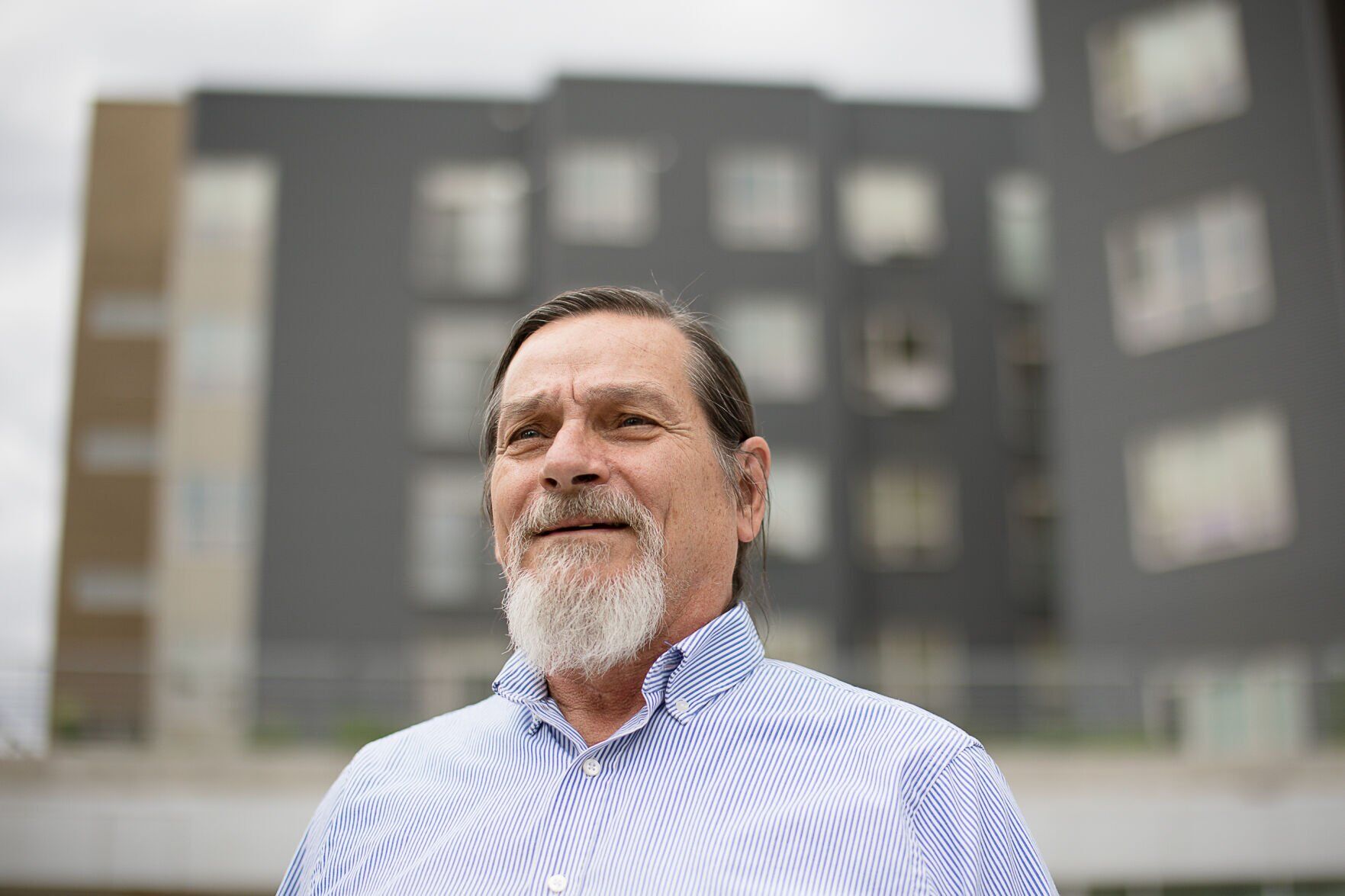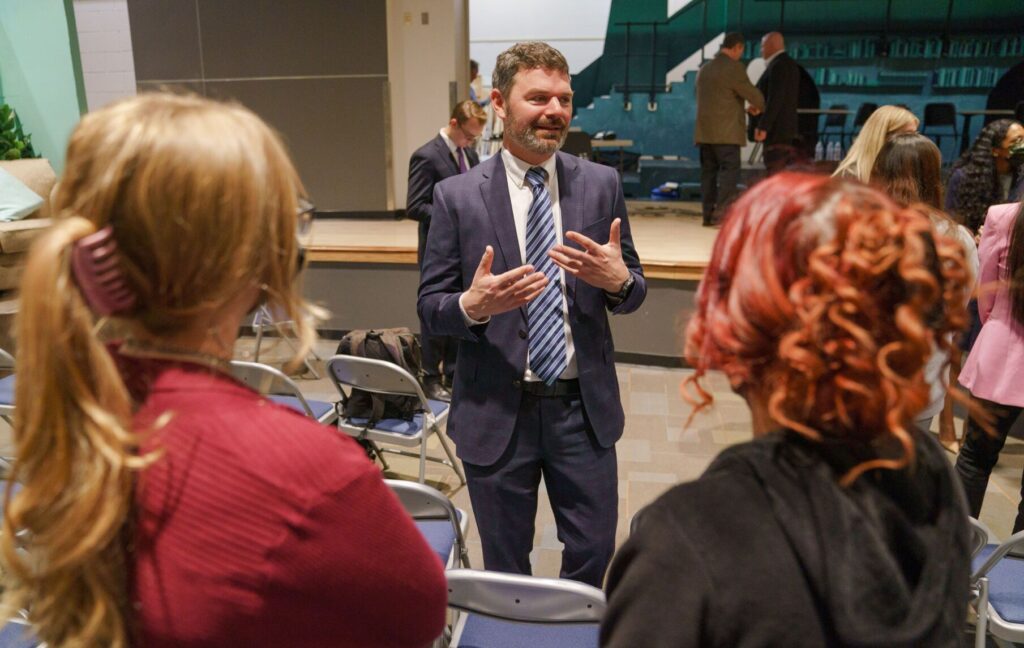Q&A with John Parvensky | Colorado Coalition for the Homeless leader announces retirement

John Parvensky recently announced that he will retire from the Colorado Coalition for the Homeless, an organization he has led for 36 years. He will continue to serve as the coalition’s president and CEO until the organization’s board picks a successor.
The Denver Gazette sat down with Parvensky to reflect on his time with the organization, the state of homelessness in Denver and across Colorado and what’s next for the coalition. This interview has been edited for length and clarity.
Denver Gazette: What does it mean to you to see how far the size and reach of the coalition have come? (The organization had six employees when Parvensky joined the coalition. It now has 750.)
John Parvensky: Over the last 20 years, we’ve really been leading the way in terms of identifying and implementing best practices to address homelessness by creating both a health care and integrated health response, but also creating housing to address the needs of families and individuals experiencing homelessness not only in the Denver area, but across the state. … Despite the fact that we’ve literally housed tens of thousands of families and individuals, the problem on the street is getting worse rather than better. So I think we’ve been able to demonstrate programs and initiatives and interventions that work. What we have not yet been able to do is to bring it to the scale of the need to address the influx of people who are becoming homeless, because the existing infrastructure in the community isn’t sufficient to provide housing and support for those who need it.
DG: Homelessness is a multifaceted issue. What, in your opinion, are the biggest factors that lead to homelessness?
JP: The lack of affordable housing is certainly the biggest common denominator of course – it’s what defines homelessness is the lack of an adequate place to live. Most of that is driven by housing economics. Unfortunately in our society, housing is a commodity. And if you own it, either individually or if you’re a landlord that owns housing, you want the values to go up. If you don’t have housing or you don’t rent housing, then you fall further and further behind, and that is the situation we find ourselves in with high cost cities like Denver. What high cost cities like Denver are seeing is that it costs more to build, provide and pay for the operation of housing than what a large segment of our population can afford based on their fixed incomes, Social Security, working entry level and minimum wage jobs. When there’s a lack of affordable housing, there’s more competition for that affordable housing. People who have other challenges like health, mental health, addictions, people who are coming out of the justice system – it’s much more difficult for them to be able to find and find the landlords willing to rent to them.
DG: Homelessness is also a compounding problem. To what extent does housing help?
JP: Housing alone for some people is enough. But for others, we need housing combined with support services that can help them address those underlying issues. Whether it’s PTSD for the homeless veteran, similar PTSD and mental health services needed for families fleeing domestic violence or abuse, or getting treatment for addiction to reduce dependence on substances and ultimately work toward recovery. For those who are mentally ill, it’s about ensuring they have access to ongoing medication and counseling that they need. And then when they hit a bump in the road, they don’t end up losing their home and have to start all over again. … And then we need to address the systemic discrimination that has prevented people of color from accessing housing because of redlining or blatant discrimination. When there’s a shortage of housing and landlords get to pick and choose, they often get left behind. We see other marginalized communities like people who are LGBT discriminated against in housing who don’t have the support they need to be able to obtain housing. We’re also seeing too many youth who are graduating or transitioning from the foster care system without the resources and support to be able to be independent, so many of them are ending up on the streets. Really, homelessness represents a failure of multiple systems. And when those systems are combined again with a lack of affordable housing, that’s when you see the explosion of homeless we’ve seen in the last few years.
DG : What are the most effective strategies you’ve seen across the country and in other parts of the world to combat homelessness?
JP: Dealing with people who are chronically homeless and have those underlying health, mental health, addiction issues, providing supportive housing through a housing-first model has proven to be effective. The results of the Denver Social Impact Bond that was studied by the Urban Institute demonstrated that by providing supportive housing with wraparound services to people who are cycling in and out of Denver jail – a very challenged population – that we could successfully maintain housing stability, keep them out of jail, out of police contact and save the city and the community money. It’s cheaper to provide that housing with wraparound services than to do nothing, so we need more of that. For those who are just economically locked out of affordable housing, we just need to build more and make sure that it remains affordable. Too many investors come in to buy older apartment buildings, slap a coat of paint on it and raise the rents by $400, and people’s incomes don’t allow them to be able to then afford those rents. We need to make sure that we have community and public investment in affordable housing that preserves it and makes sure that it’s affordable for the long term. Then we need to make sure that we have a robust health and mental health system that can respond to people who do face challenges and make sure those challenges don’t lead to them losing their housing, ending up being on the streets and then having a much more difficult climb out of homelessness.
DG: To what extent, if any, do you put the onus on individuals for the predicament they are in?
JP: I think ultimately, homelessness is a systemic issue that stems from failures of communities, failures of institutions to provide the support. We used to think the response to homelessness is being a charitable endeavor, but really any great city or thriving community needs to have an infrastructure that can provide a crisis response and a pathway out of homelessness for folks who fall into it. And unfortunately, most communities don’t have that or don’t have it to the level or the scale that they need it. Business leaders often tell them that if every time it rains and the city floods and all we do is curse the rain and don’t do anything about the drainage, then we’re doomed to repeat that failure over and over. We’ve got the same thing: We can’t just complain about the fact that homelessness exists if we’re not building an infrastructure of a crisis response system or adequate emergency shelter for those who need short-term housing, and then building the housing that people need to be able to both participate in the workforce and to be able to just live decent lives. If we do that, it’s not only good for those individuals, but it’s good for the quality of life of the community.
DG: What kind of policies would you like to see across Colorado to improve the homelessness situation?
JP: We know what works, we just need to invest in bringing the solutions to the scale of the problem. For too long, there’s been a denial in many communities. They think it’s just an urban problem, just a Denver problem, and people from suburban communities are coming to Denver because that’s the only way they can get help. But homelessness exists across the state and we need statewide solutions. We need adequate investment in housing and support services to be able to both prevent people from becoming homeless in the first place and then to provide that pathway out of homelessness with adequate supportive housing. The foundation of what I think has made us successful with ending homelessness and for those that we have has been treating housing as health care and then building housing and taking advantage of the opportunities. It’s not easy work. It’s taken a lot of skill to be able to put together complex financing to be able to build some of these buildings and make it affordable for folks who have very little resources and then be able to create and attract the health care talent and be able to serve folks who have multilevel needs. I think continuing to do that and replicating it in other parts of the state would help take the pressure off so it’s not just seen as a Denver issue.
DG: What are you most proud of in your time leading the coalition?
JP: I’ve certainly been proud that we’ve been able to build 2,000 housing units and house on any given night 4,000 households, many of whom would be homeless and on the streets if it weren’t for that fact. We’ve been able to build those communities and demonstrate that that approach works. We’ve been able to provide integrated health care that is I think second to none as it relates to providing integrated health services for people experiencing homelessness, recognizing the special needs they have from medical, to psychiatric, to pharmacy, to dental. Being able to do that in a way that addresses the most challenging problems that individuals have and then to help them once we were able to get them in housing, stay in housing.
DG: What does it take to successfully lead the coalition? What are you looking for in a successor?
JP: It’s the board of directors’ responsibility to find that person. Fortunately, we have built a pretty strong executive team that supports all of this work, from the development of housing and the management of that housing to the provision of that integrated health care in that multidisciplinary way. I think a new leader needs to be able to build upon that infrastructure that we’ve built, the talent and the skills that our staff have to be able to then help elevate and bring it to that level so that we can grow to be commensurate with the level of need that we’re seeing in our communities.
DG: What are your hopes for the future of the coalition after you leave?
JP: I hope it continues to lead the nation and lead the state in terms of continuing to develop innovative solutions and to do more of it so that we can actually see the number of people on the streets – that visible homelessness that is so prevalent – actually decrease. We can convince more communities who have been denying that they have a problem to take responsibility for and invest in those solutions.















